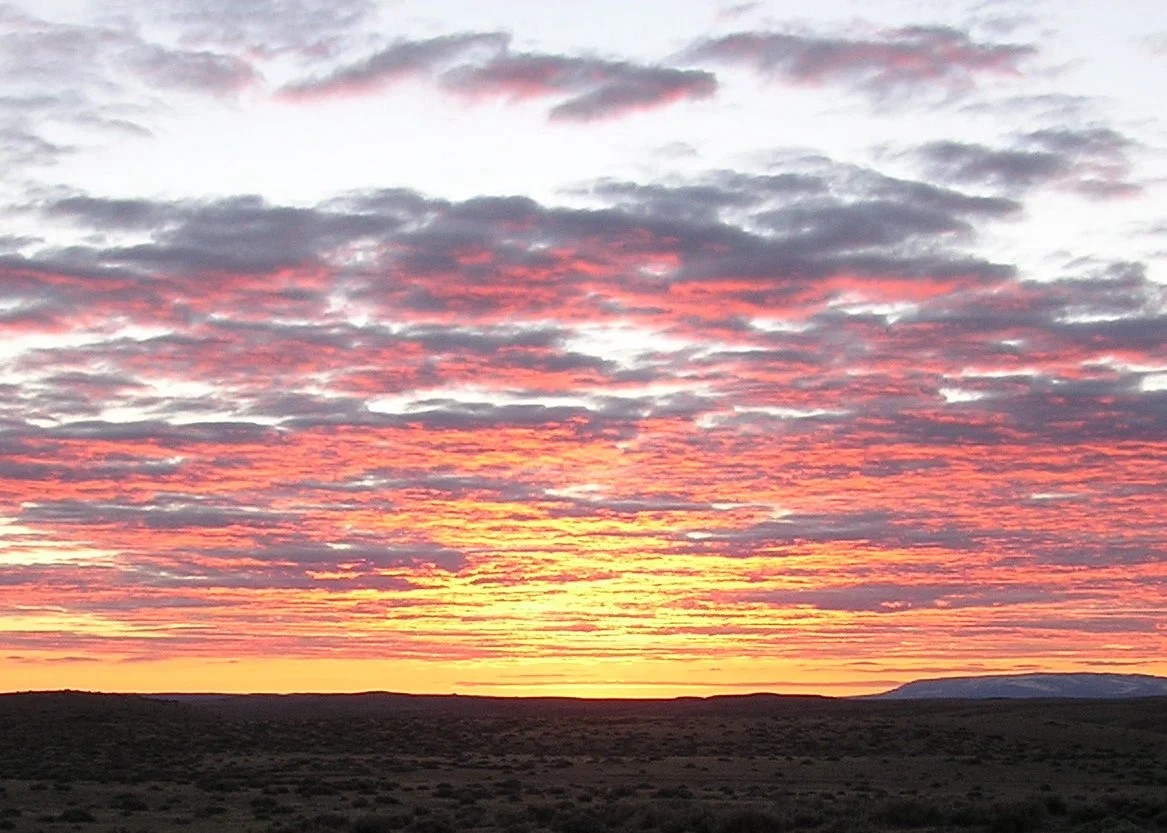Plenty of Pronghorn - Part 2
The first morning of our hunt dawned crisp and clear, and with the pit-of-the-stomach excitement that feels at once so good and yet so worrying. The previous day Mike had proclaimed Randy and me sound in the shooting department after we hit his paper-plate target from both sitting and prone positions. I wasn’t so sure. I have never had trouble placing shots onto an uninteresting paper object – it’s the breathing, beautiful, long-dreamt-of, big-game animals that cause me to shake and make bullets soar in unwanted directions. But the truth-testing was now at hand. On the drive to Casper, Randy had lost (won?) the coin toss and so I was to have the first crack at a trophy Pronghorn. As we drove away from the camp in Mike’s four-wheel drive pickup, we were never out of sight of pronghorn bucks minding their harems. Some of the same groups from the day before were around, but as we moved further away from camp, new groups began to appear.
The area into which we drove had both open, high-desert vistas, as well as breaks with deep, tree-lined ravines. We left the truck about 7:30 with the intention of only having to top the closest ridge in order to see a buck Mike had spotted several times. Randy and I waited below as Mike carefully crawled up and peered over the ridgeline. He turned around and motioned for us to join him. “Not here” he said, but added, “How about if we climb the next ridge to have a look?” We followed the same game plan: our guide led, we waited below, and then we followed him up. Though there were no Antelope in the ravine on the other side of this ridge either, there were several bucks, at different points of the compass, working their way around the countryside.
After assessing each of them in turn, Mike dismissed them all with “Not first day shooters.” So, we headed for the next ridge, but before we could reach it, we spotted two bucks in a cut that we had been unable to see into while on top of the previous ridgeline. Randy and I crouched in our tracks, while Mike tried to get a look at their horns. “I can’t see them well enough because they are staring straight at me!” he mouthed back at us. And then, looking disgusted, he stood and said in a whisper, “They took off.”
We made our way up and then over the next ridge. However, as we descended, I happened to glance to my right and up the next slope. I hissed to Mike, while at the same time slowly pointing at the buck that had just materialized from the other side of the hill in front of us.
Again, we all crouched where we were, while Mike raised his binoculars to study the buck as intently as the buck seemed to be studying us. Mike turned his head just enough so that I could read his lips as he mouthed, “I think he is a shooter!” I lay down and flipped the short legs of the Harris bipod into position. Mike was still sizing the buck up as I placed the crosshairs behind the animals left shoulder. The buck began to walk across the slope just as Mike whispered, “We want this one.” I quickly asked, “Where do I hold?”
To go back a bit, Mike had told me that he would range the animal he selected. However, he also told me that he would not tell me the distance, but instead, knowing where I told him the point of impact would be for various distances, he would coach me where to hold. This would, hopefully, take the necessary calculation out of my hands when I was likely to be the most nervous. Also, knowing that I was not enthused about shooting at long distances, I would be less worried by him stating, “Hold so many inches below the animal’s backline” as opposed to “It’s three hundred yards.”
So, back to the first trophy Antelope at which I had ever aimed, Mike’s response was “Hold three inches below it’s back.” The problem was, the Antelope was still moving, albeit slowly, and I could do the math enough to realize that I did not want to take a 300 yard or so shot at a moving animal. But my guide’s “Wait for him to stop”, took that decision away from me as well. The problem was that the buck didn’t stop before he had crested the ridge, disappearing over the other side. As previously instructed in the safety talk, I removed the cartridge from my chamber, pushed it back down into the magazine and then pushed the bolt closed onto an empty breach. (All the guides seemed to have an aversion to an overexcited client putting a round up their backside as they followed them up and down slopes and across ridges.) We then headed up the slope with our guide’s whispered, “He should be standing right over this ridge.” But, he wasn’t. I confess to being very disappointed, but at the same time I realized there were many more Antelope left in the bushes.
Next Week - Plenty of Pronghorn - Part 3



